
John M - 3-12-2013 at 04:03 PM
Oh no, not tire pressure again????
Yes - only with a little twist.....
Neighbor is intending to try to use his truck where usually 4x4s tread (pun intended). It's a two wheel drive Tundra with a locker, lifted and decent
off road tires. So what to do with front tire pressures under different conditions is the question. He's not the "just nail it and go" kinda guy,
usually.
For comfort on regular dirt roads?
Sand?
Soft sand?
Rocky conditions?
What about something like Calamajue Canyon?
John M
mulegemichael - 3-12-2013 at 04:20 PM
20 # max....hopefully he has stout sidewalls...and a compressor.
shari - 3-12-2013 at 04:59 PM
lower than 20 on sand...if he even hints at getting stuck...ie: spinning tires or sinking down...let more air out and drive out of sand slowly...air
back up in town or with your compressor...my husband hardly ever has to use his 4X4 gears with low tire pressure.
David K - 3-12-2013 at 05:52 PM
John, it depends on what type of tire he has. Mud terrain and other stiff, 3 ply sidewall tires need more air removed than most AT or highway tires.
If he gets stuck at whatever pressure is in them, let out more air! If in sand, clear away any buildup of sand in front of the tires (they act like
blocks). In most cases, 8-10 psi is the minimum pressure.. as I said, it depends on the tire tread and sidewall construction.
Here is a post I made on Tacoma World, and probably here too, back in 2010:
We returned to our favorite beach in Baja last Saturday (July 17, 2010) with a heavy load of camping gear including two full ice chests and 6 gallon
tank of water.
Two weeks earlier we discovered with the heat and heavy load, the Traction Control in H4 alone couldn't keep us moving (as it had last winter with a
light load).
Again, we did cross the expanse of sand to the water's edge, but the truck struggled in the sand. I also tried A-TRAC in L4, but it still wanted to
dig in. Once the air pressure was dropped to 15 PSI, I moved on with ease (in H4).
I took photos where I deflated the tires and seeing the two sides is pretty dramatic.
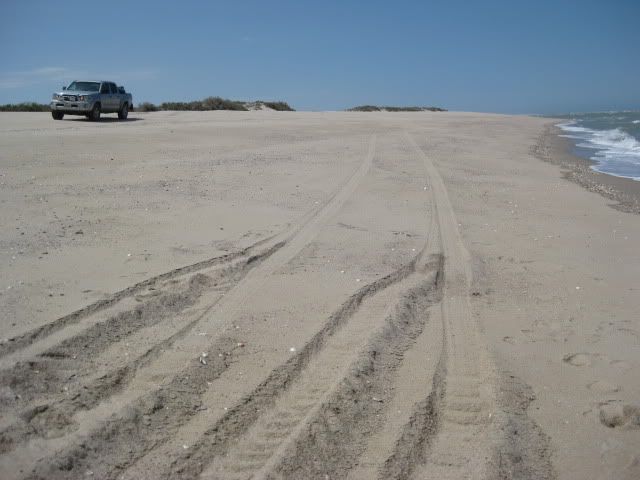
32 PSI the truck was digging in and slightly sideways on the steep beach. Once deflated to 15 PSI, the truck 'floated' on the sand and drove straight.
I circled back to take these photos.
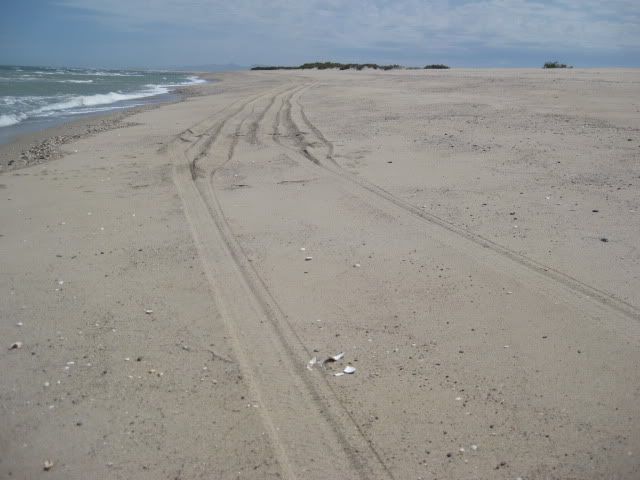
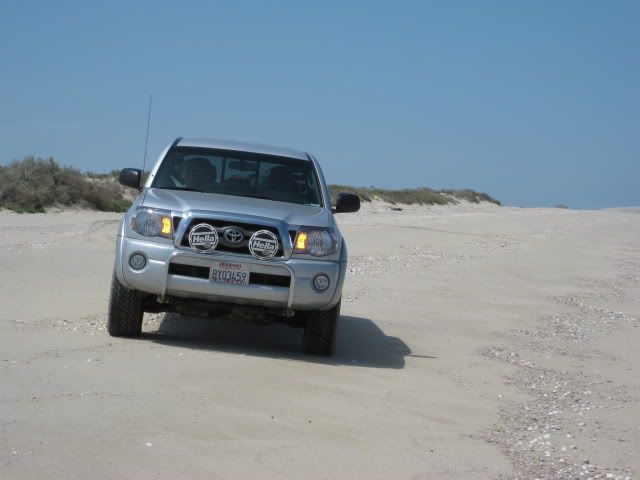
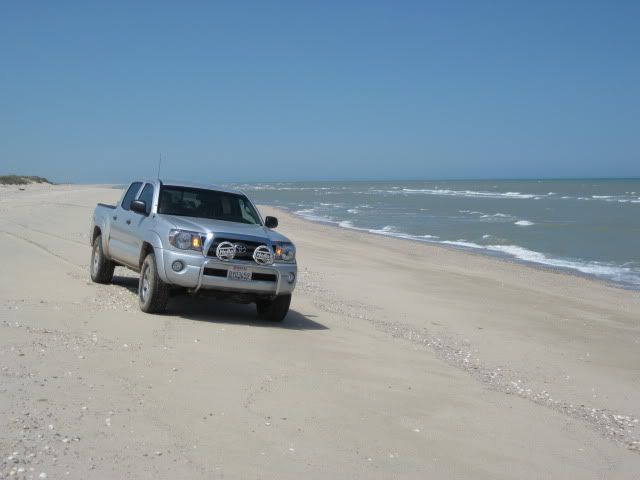
We also continued south to Gonzaga Bay and Coco's Corner...
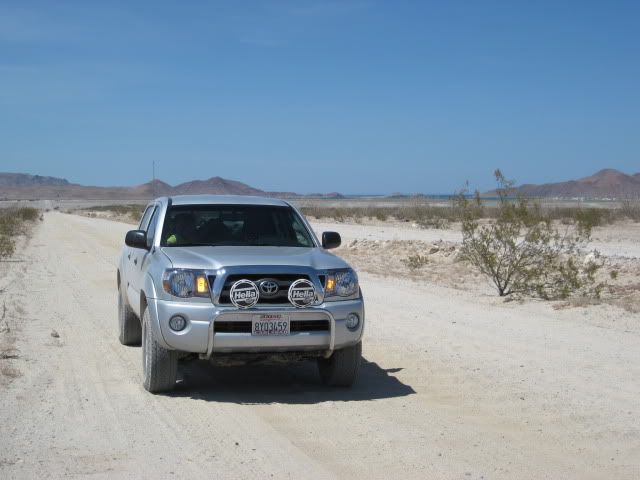
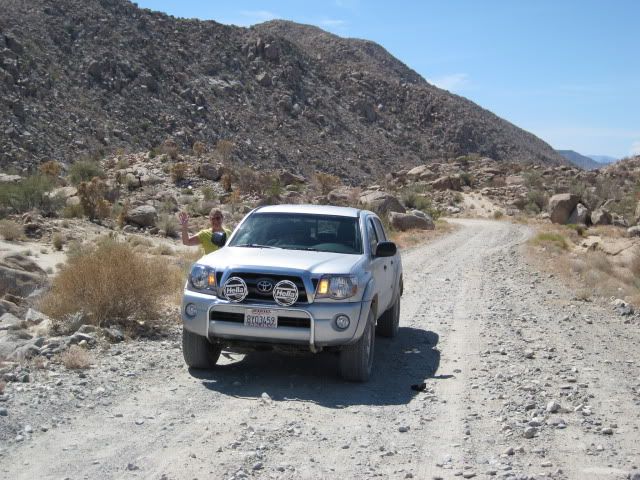
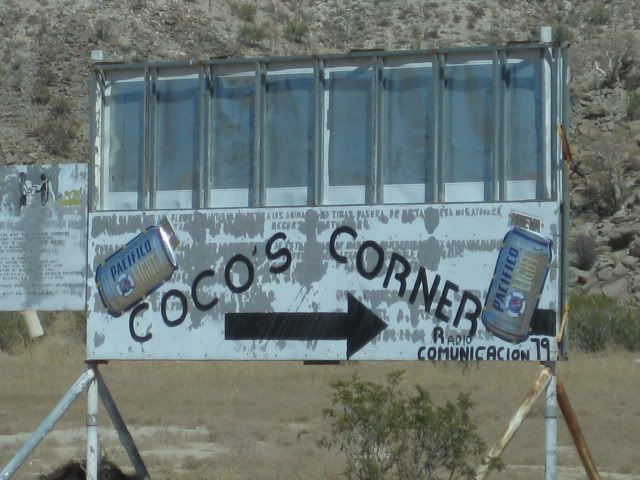
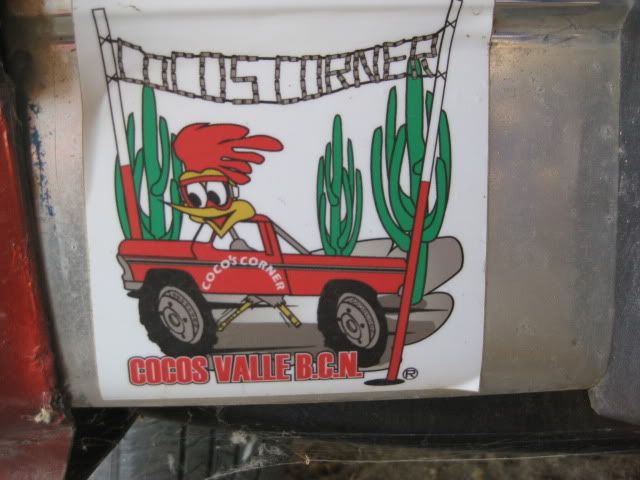
Perhaps a trip report will be coming up, but I wanted to show off the traction/ floatation photos!
front tires
John M - 3-12-2013 at 05:57 PM
Remember this is not about the rear tires, but the front on a two wheel drive pick up. Rear tire inflation is well understood.
John
David K - 3-12-2013 at 06:14 PM
All 4 tires must be deflated, 2WD or 4WD doesn't matter. No good for the rears to float only to have the fronts 'knife in' to the sand (the engine is
heavy)!
Maderita - 3-12-2013 at 06:57 PM
There are so many variables. Among them is sidewall stiffness of the particular tire brand/model.
My best guess is 18 to 22 psi on the front tires for dirt, rocks, and short sections of sandy arroyo. Lower pressure will provide better traction, but
at the cost of exposing the sidewalls to damage by rocks.
For soft sand, try10 psi in the front tires. Many people make the mistake of not airing down their front tires. Rolliing resistance remains high, and
the rear tires just won't have the traction to push the vehicle forward.
Some tires with stiff sidewalls will crease or fold rather than make a smooth bulge when aired down. If it starts to crease, then the tire will need
more air pressure.
For getting unstuck, tires could be dropped to 8 psi, maybe 6 psi, very briefly to get unstuck and to reach solid ground.
Driving in sand with 2WD is almost certain to create a stuck situation, unless the driver is highly experienced. Hopefully your neighbor is with
another vehicle which has 4WD. A locking differential adds amazing capability. Beware though, when a vehicle with a locker gets stuck, it's really
stuck. And when a 4x4 gets stuck, it's really, really stuck. Beach sand and 2WD is like playing with fire, sooner or later ...
Some tips on driving sand:
Air down BEFORE entering sand. Keep the speed up, preferably at least 15 or 20 mph. Have the sand route well planned, even if you have to walk it
beforehand. Have the tools and accessories to get unstuck - Hi-Lift jack, tow straps, etc. Bring a 12v compressor/portable air.
Turns must be well thought out in advance - turning the steering wheel is like throwing out an anchor. Plan stops so that you are pointing downhill.
Stay above the high tide line on beaches. Unless you have a Jeep club with you, it's no place to play.
Sublimity - 3-12-2013 at 09:11 PM
John M,
Did a little research and I think that this excerpt explains it best...
"But remember, you must still deflate all four tires even though you are only putting power to two. Your hard front tires create hills that your rears
must continually try to climb."
David K - 3-13-2013 at 12:07 AM



Thanks for the thoughts
John M - 3-13-2013 at 06:11 AM
'nuff said
John M
woody with a view - 3-13-2013 at 06:20 AM
i was gonna chime in. never mind!
TMW - 3-13-2013 at 11:58 AM
He may also want to invest in a winch that can be mounted to his receiver for when he's not with a 4x4.











